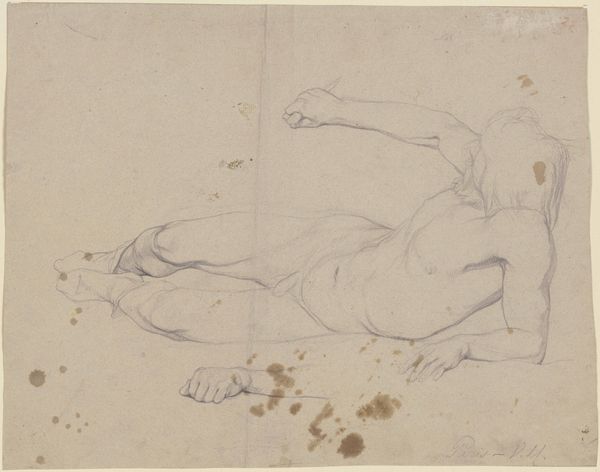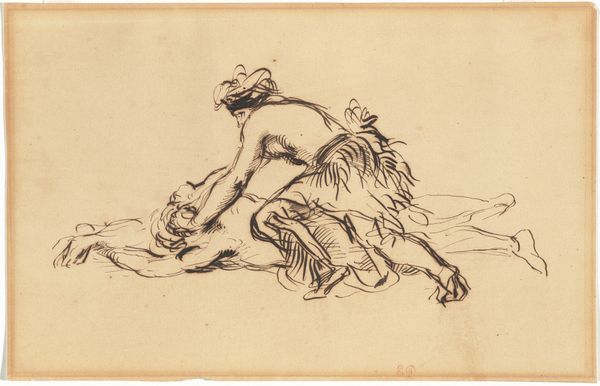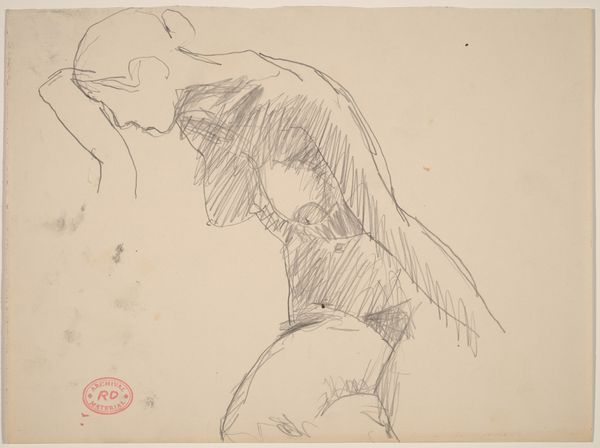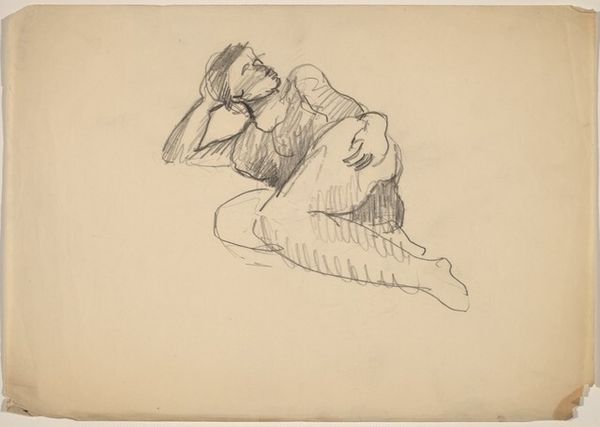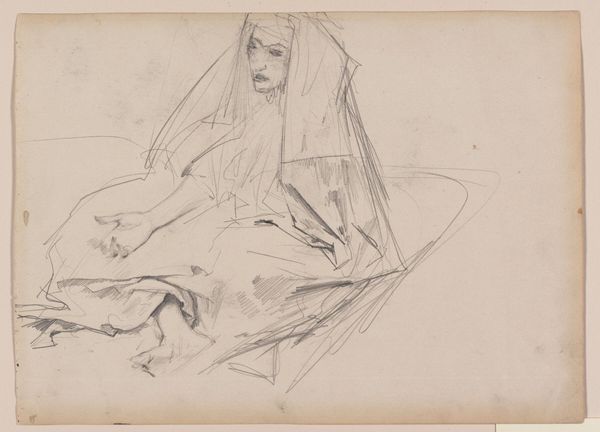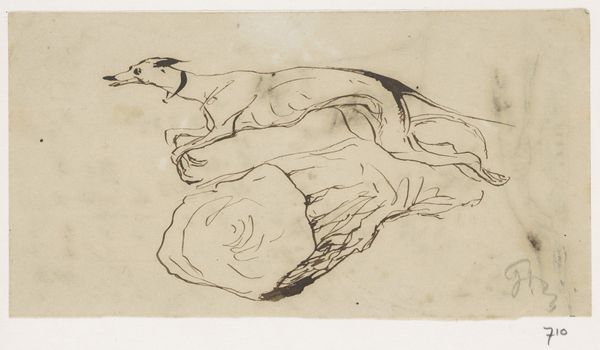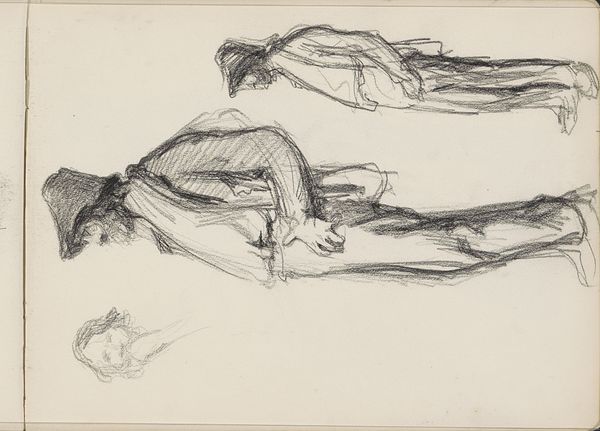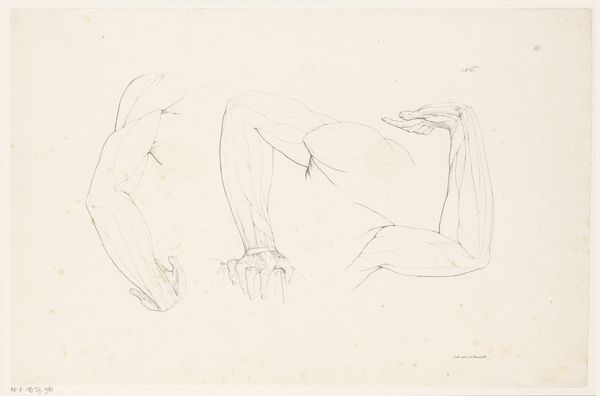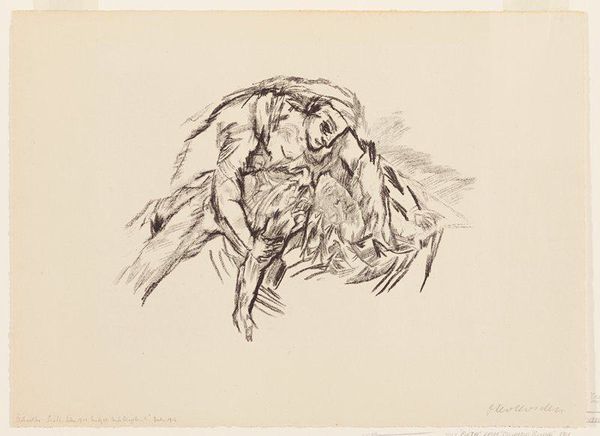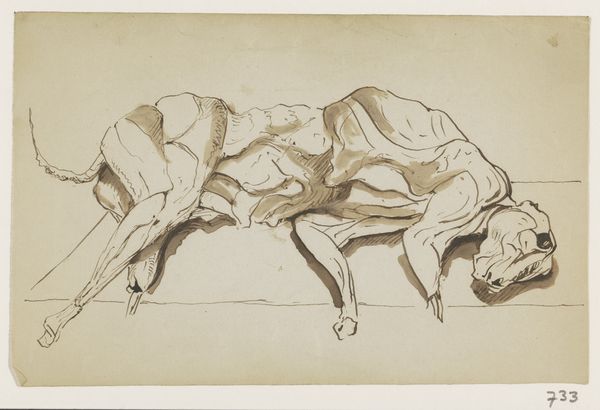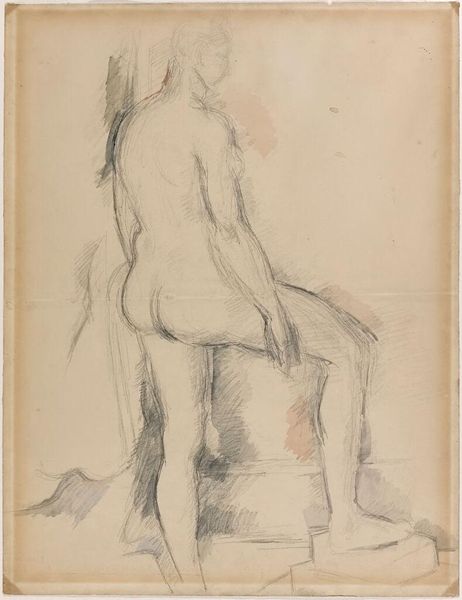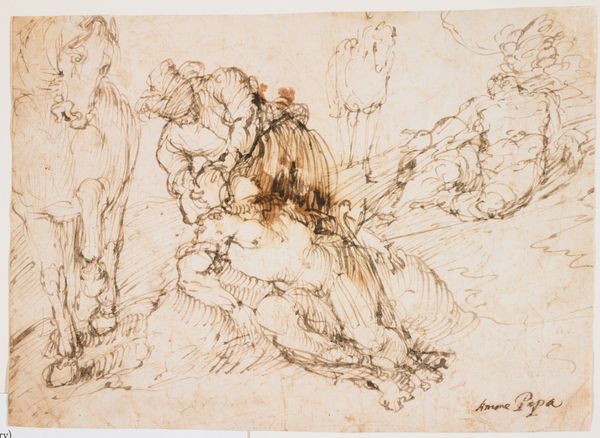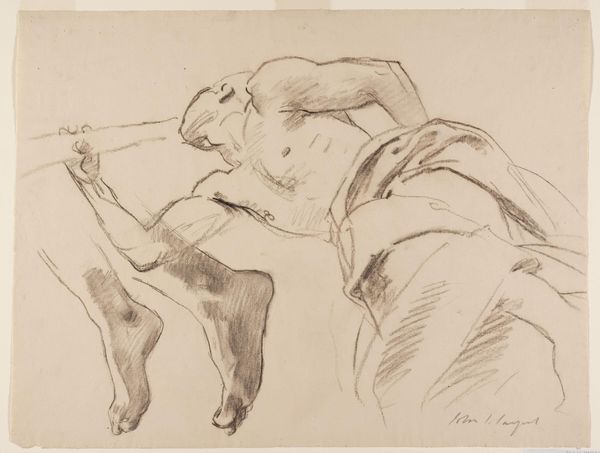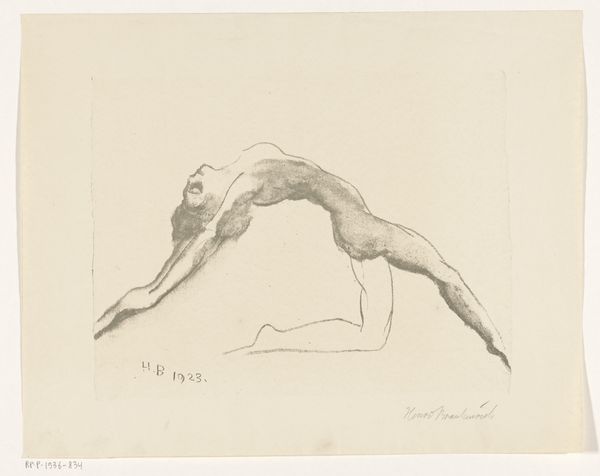
Dimensions: Sheet: 12 3/8 x 19 5/8 in. (31.4 x 49.8cm)
Copyright: Public Domain
Curator: Fernand Cormon’s “Crouching Woman,” created sometime between 1865 and 1924, offers an intimate glimpse into the artist’s process. Executed in ink on paper, this drawing now resides at the Metropolitan Museum of Art. What strikes you first? Editor: The composition feels deliberately unbalanced. All that detail and weight in the torso, fading into wispy lines at the legs. The fur around the figure contrasts beautifully with the spare background and adds so much to the surface. Curator: It’s a compelling contrast, isn’t it? Cormon, an academic painter known for large historical canvases, often created studies like this. Note the rapid lines – it speaks to a preparatory investigation of the figure, probably intended for a larger composition with historical underpinnings. Consider the role of academic art in 19th century Paris, for example, with artists making history into narrative images that served moral purposes. Editor: I am captured by the subject's gaze - facing forward. It lends the piece a dramatic tension between her gaze, our gaze, and the compositional unbalance you noted earlier. Curator: Indeed. Cormon sought to capture human experiences that extended beyond mere depiction; even sketches hint at that. Think about his influence and popularity as a teacher. His students included artists like Matisse and Toulouse-Lautrec, and it shows Cormon's ability to depict vulnerability, human strength, and history on the same canvas. Editor: Yes, it certainly speaks volumes even in its unfinished state, doesn't it? One feels an undercurrent of latent movement, ready to unfold any moment. Curator: Precisely. “Crouching Woman” exemplifies Cormon's study of historical dress. In its apparent simplicity, it reveals much about his time, methods and motivations. Editor: Agreed, it's remarkable how a seemingly fleeting sketch can offer us so much to ponder about process and intent.
Comments
No comments
Be the first to comment and join the conversation on the ultimate creative platform.
